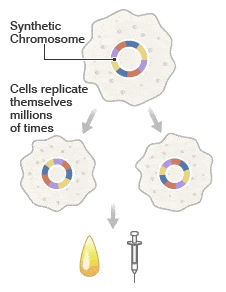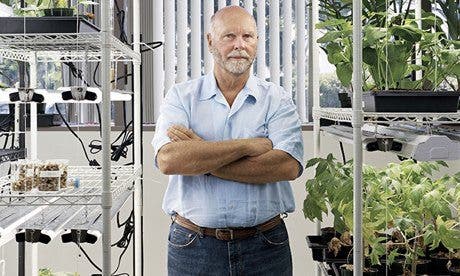Craig Venter may just be the most arrogant high-profile scientist today, but in his defense the man has a lot to show for. You might not remember the name, but you might remember his hallmark achievement – the creation of the world’s first synthetic life. Now, with the release of his second book, Life at the Speed of Light: From the Double Helix to the Dawn of Digital Life, Venter takes advantage of the opportunity to reveal one of the most powerful biological application science has had to offer in the past few decades. Venter and his company, Synthetic Genomics Incorporated (SGI), have created a prototype for a device that can remotely receive DNA sequences over the internet to synthesise proteins, viruses and even living cells.
Antibiotics and other health applications are first at mind for such a device. It could, for example, fill a prescription for insulin, provide flu vaccine during a pandemic or even produce phage viruses targeted to fight antibiotic-resistant bacteria. A while ago I wrote about how two big DNA sequencing companies are battling each other to be the first who gets to put a DNA sequencer on the next Mars rover – Venter’s SGI and Jonathan Rothberg’s Ion Torrent. Studies have shown that DNA can not be preserved for longer than 1 million years, so both space agencies like NASA and private ventures have to embark with the idea that life is already presented on Mars. Even so, IF there actually is life on Mars, a digital version of the DNA-based life form could be made on-site, sent back to earth and then recreated in the lab! All using a combination of the technologies currently being developed at SGI.
Synthetic life
In 2010, Venter grabbed everyone’s attention by announcing what he calls the “world’s first synthetic life”. The first major breakthrough from that line of work came in 2003, when Venter’s team made simple virus Phi X 174 synthetically. In 2008 he synthesised the genome of a bacteria that infects the human urinary tract, Mycoplasma genitalium.
“We’ve now been able to take our synthetic chromosome and transplant it into a recipient cell – a different organism.
As soon as this new software goes into the cell, the cell reads [it] and converts into the species specified in that genetic code,” Venter told the BBC at the time.
The new bacteria replicated over a billion times, producing copies that contained and were controlled by the constructed, synthetic DNA.
“This is the first time any synthetic DNA has been in complete control of a cell,” said Dr Venter.
Notice how Venter mentions the term software. “Life is a DNA software system,” says Venter. All living things are solely reducible to DNA and the cellular apparatus it uses to run on.
A biological teleportation device

Building synthetic life: chromosome of an existing bacterial cell is sequenced; then this code was copied and used to chemically construct a new synthetic chromosome, piecing together blocks of DNA; finally, this chromosome is inserted into a bacterial cell which replicated itself. Synthetic bacteria might be used to make new fuels and drugs.
Back to 2013 and Venter’s Digital Biological Converter or DBC. The current prototype, supported by DARPA, is intended to be miniaturized and sold by Synthetic Genomics for use in hospitals, workplaces and homes. So far, the device can only produce DNA, and not proteins or living cells yet. Venter believes, however, that even the current prototype is accurate enough for producing DNA precisely enough for it to be used as a vaccine.
“The future will be that if you have a [bacterial] infection you quickly get its genome sequenced – that will take minutes – and in a very short period of time we could design a phage that would attack just that bacteria very specifically,” he says. Because of the way phages attack their bacteria victims, making just the DNA of the one a person needs is enough, says Venter. “The DNA is the drug that kills the bacteria.”
In the future, Venter hopes he can refine the DBC to be able to print living cells, based on his breakthrough 2010 work pertaining to synthetic life. Efforts so far are concentrating on building what Venter calls an “universal recipient cell”, a sort of blank cell which when combined with synthetic genome would come to life. Ultimately, you can wind up with a biological teleportation device – a machine systematically sequences the DNA from a living sample, digitizes the information, relays it to a remote DBC anywhere in the world which then recreates the original life in a whole new location. Of course, this doesn’t mean you could teleport humans…
“That is not going to happen any time that we know of … They are two different worlds and two different scales and the science isn’t anywhere remotely supportive of that any more than it is recreating a Neanderthal with a willing woman.” Venter said.
Story via Guardian











